Sponsored by m-oemReviewed by Olivia FrostMay 20 2024
Securing dangerous sites is the ultimate goal of any sensitive site exploitation (SSE) directive. SSE missions consist of three major components: entering the site, assessing the environment, and collecting and identifying materials.
Military troops, first responders, and Hazmat professionals must be ready to encounter anything while working, including chemical warfare agents, hazardous chemicals, lethal narcotics, and even improvised bombs. As such, they need tools that both inform and protect them from hazards in the field.
Metrohm has the ultimate answer for performing these tasks—IBEX is in a class of its own. It is a quadrupedal robot outfitted with a stand-alone Raman spectrometer (MIRA XTR DS) and a variety of environmental sensors.
This remote-controlled robot can securely conduct preliminary reconnaissance by scanning an environment, identifying materials, and reporting back on specific conditions.
Material ID with Raman
Raman spectroscopy is an analytical method that can differentiate thousands of potentially lethal compounds using a simple point-and-shoot operation.
MIRA (Metrohm Instant Raman Analyzer) collects data from potentially hazardous substances via through-container and standoff examinations, direct immersion evaluation, and remote and delayed acquisition.
Most importantly, Raman analysis provides real-time results for better responsiveness. It is quick, precise, and does not require any contact for materials identification.
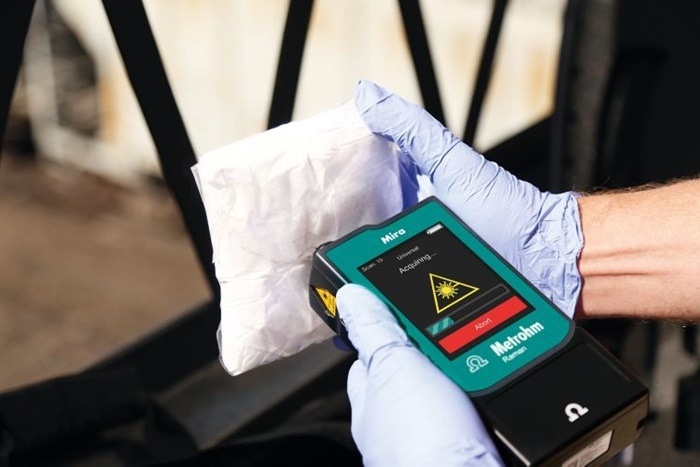
Image Credit: Metrohm
MIRA XTR DS integrates all of these features in a rugged, compact package. When faced with a developing threat, MIRA can identify potential dangers and assist a team in understanding, planning, and executing its key objectives.
MIRA can also safely and swiftly identify suspicious compounds, such as white powders, without opening the container and risking exposure. The MIRA XTR DS’s Long Working Distance Attachment can scan through many transparent/translucent materials, while the PowerPack allows you to work in the field for hours.
Promoting Safety with Standoff Raman
Fentanyl and other narcotic, radiological, toxic, nuclear, and explosive (CBRNE) substances can be deadly. Identifying hazards from a safe distance saves lives.
Standoff sampling can be used to identify a material in numerous containers from up to two meters away. Its remote acquisition capabilities mean a system can be positioned, the room cleared of personnel, and the laser is armed and activated by a nearby operator. Standoff Raman has many benefits. It can:
- Reduce exposure to potentially deadly situations
- Acquire forensic data from crime scenes with no disturbance
- Examine potentially explosive objects from a distance
Easily Identify Materials with Autofocus Standoff (AFSO)
Military troops, emergency responders, and other Hazmat personnel specialize in site reconnaissance but may not be experts in material identification.
The ideal SSE tools allow any operator to do complex analyses quickly and easily. Automation and guided processes remove the guesswork from the sample interrogation, and this is where Metrohm Raman’s Autofocus Standoff (AFSO) thrives.
AFSO is specially designed as a “Ready! Aim! Fire!” standoff Raman system. An operator uses the laser sight to target a material, and AFSO prepares the system for standoff sampling before arming MIRA’s laser and taking a sample.
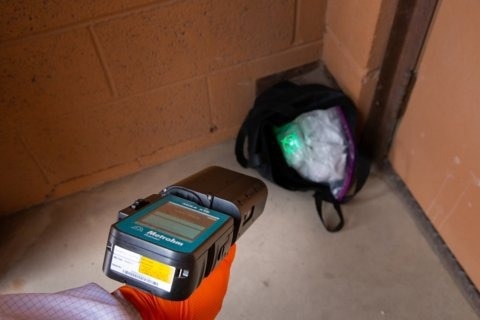
Image Credit: Metrohm
Autofocus Standoff (AFSO) enables the identification of materials through their packaging from up to two meters away. This MIRA attachment automatically concentrates on the subject, ensuring optimal accuracy at a distance.
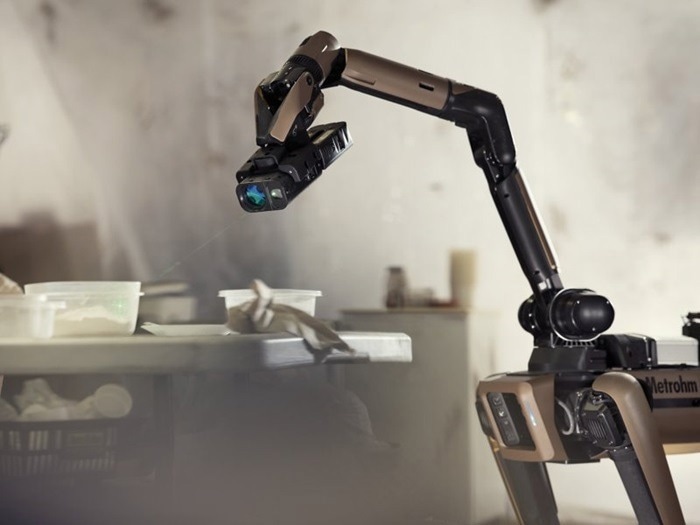
IBEX with MIRA XTR DS and AFSO attachment. Image Credit: Metrohm
Autofocus Standoff Applications
MIRA XTR DS and AFSO can be configured in a variety of ways, depending on the scenario:
- Simple handheld usage for rapid results without the need for any bulky equipment
- Pistol-grip operation for situations that demand a more secure handhold
- Tripod mounting enhances laser aim and reduces human error, especially in high stake scenarios
- Robot integration (with or without environmental sensors) enhances security in potentially lethal situations
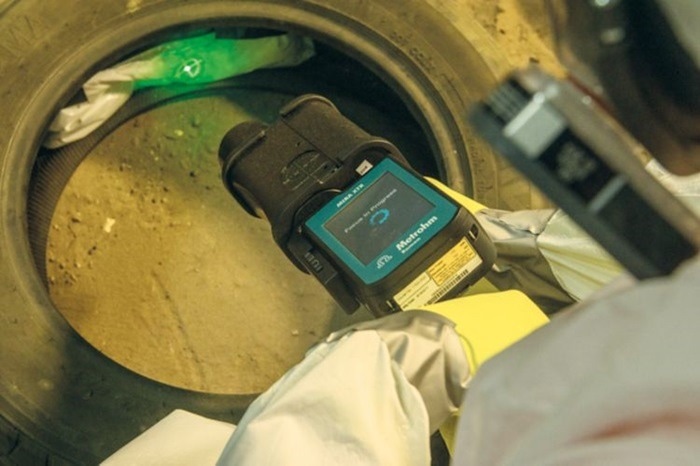
Image Credit: Metrohm
Robot Integration with MIRA XTR DS and AFSO
IBEX has everything that is needed for optimal SSE capability. Combining MIRA XTR DS, AFSO, and an array of environmental sensors on a robot creates a compelling tool that improves a team’s ability to conduct site exploration with pinpoint accuracy and safety.
Under remote operation, a robot can examine the scene, analyze potential risks, and collect samples without putting a human in danger.
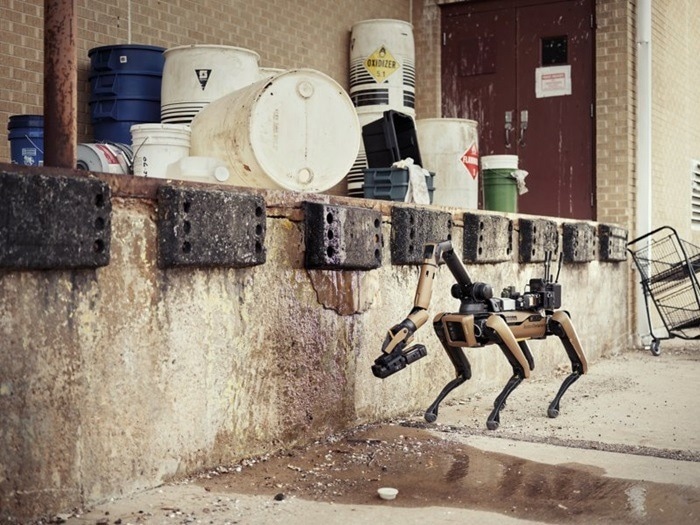
Image Credit: Metrohm
IBEX uses the superior maneuverability of Boston Dynamics’ Spot® robot for efficient site reconnaissance. The integrated robot system, which includes standoff Raman technology and remote-control capabilities, can perform safe, remote chemical detection kilometers away from the team’s position.
IBEX can find and identify tens of thousands of substances and provide rapid risk assessments for hot zones. The sensor pack consists of a chemical warfare agent (CWA) detector, radiological/nuclear detectors, and a flammable gas indicator.
This type of integrated technology can conduct a comprehensive scene assessment swiftly and safely, assisting a team in understanding and mitigating threats from a distance. IBEX gets the work done while keeping the team safe.

This information has been sourced, reviewed and adapted from materials provided by m-oem.
For more information on this source, please visit m-oem.